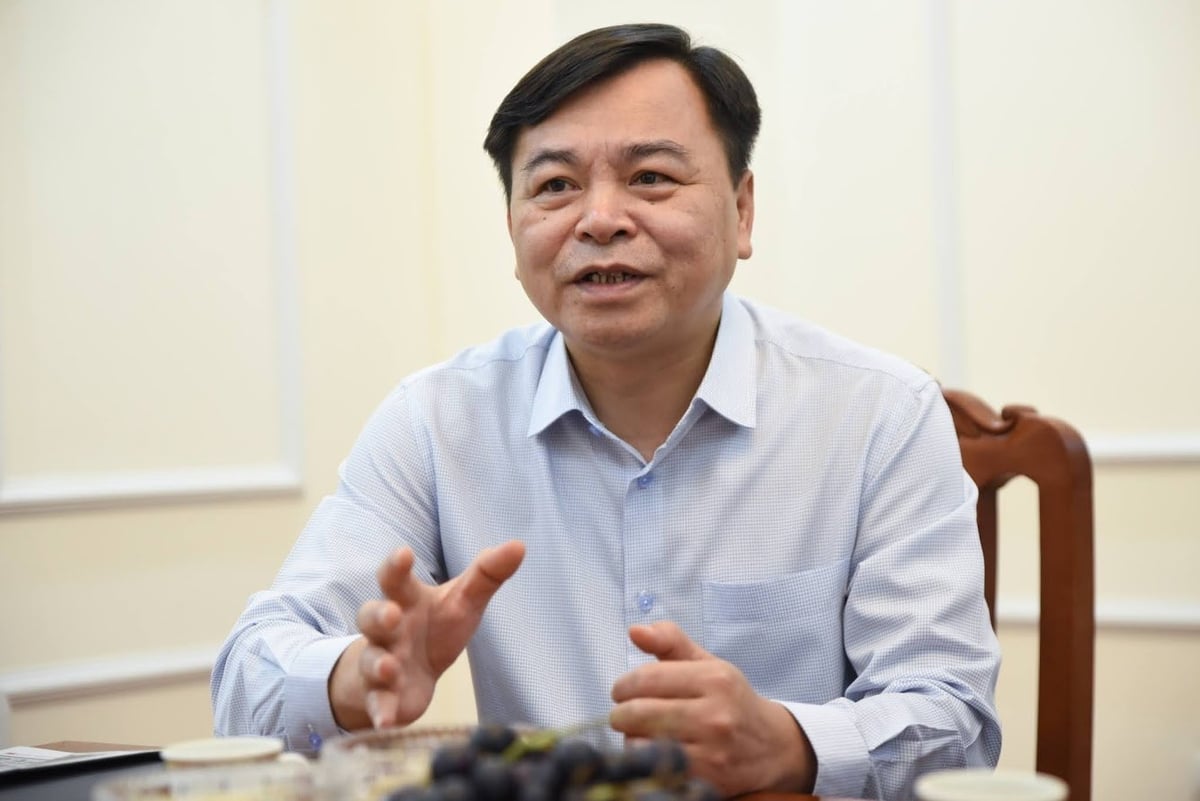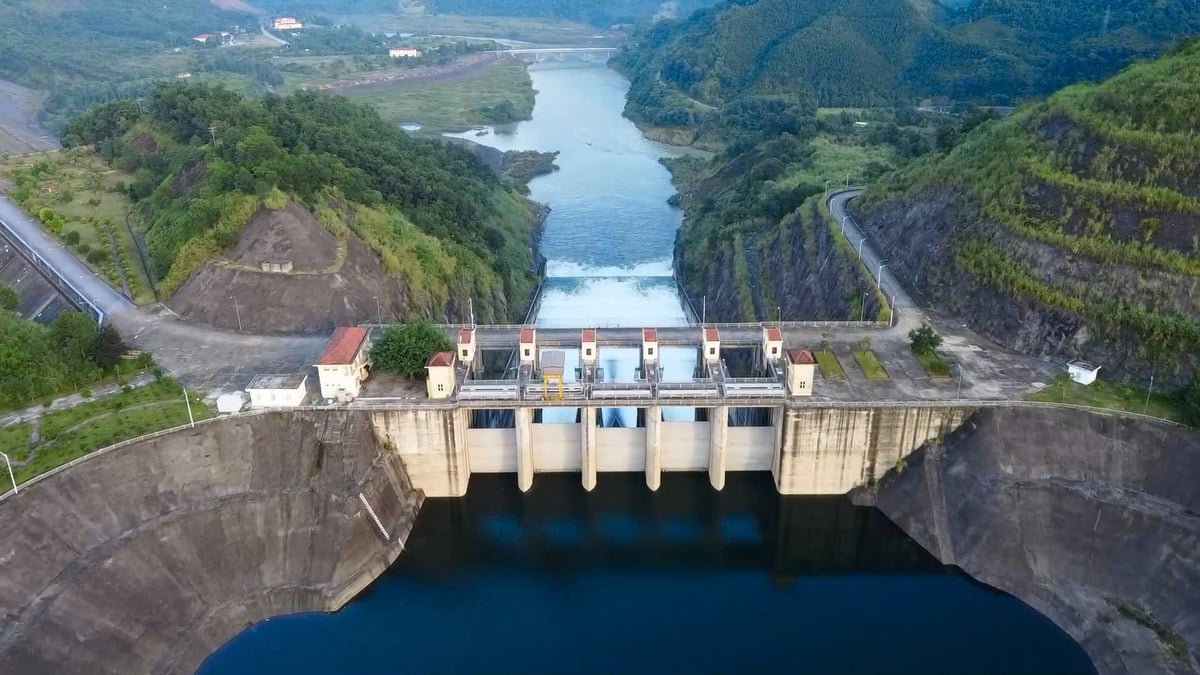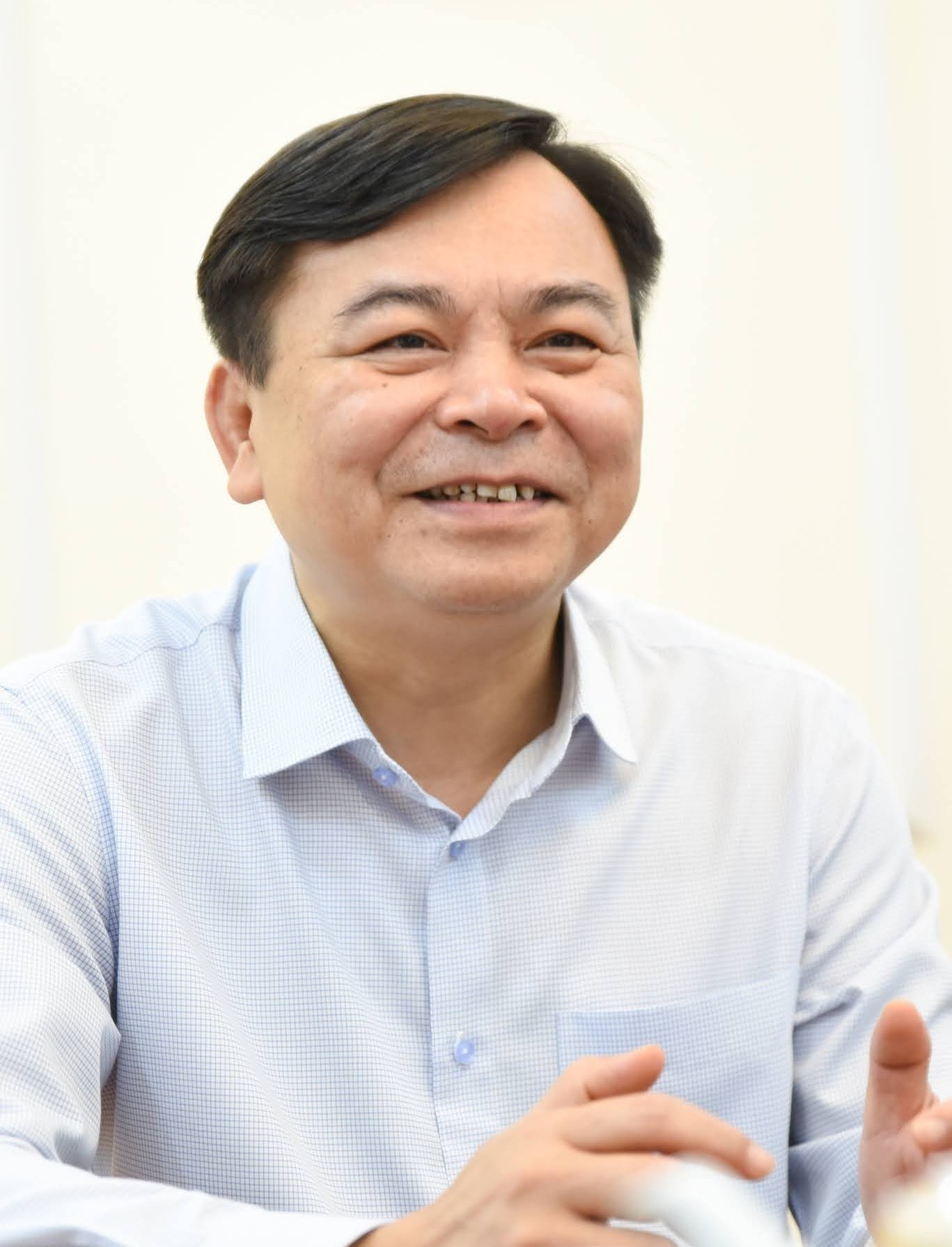November 4, 2025 | 03:44 GMT +7
November 4, 2025 | 03:44 GMT +7
Hotline: 0913.378.918
November 4, 2025 | 03:44 GMT +7
Hotline: 0913.378.918
For 80 years, accompanying the nation’s history, Vietnam’s irrigation sector has driven major transformations, harnessing water resources for production and daily life. This has helped Vietnam move from a poor, agrarian country to one of the world’s leading exporters of agricultural, forestry, and aquatic products. Now, amid the green transition, the sector must once again renew itself to sustain progress and meet diverse objectives.
The Vietnam Agriculture and Nature Newspaper spoke with Deputy Minister of Agriculture and Environment Nguyen Hoang Hiep about these challenges.

Deputy Minister Nguyen Hoang Hiep shares development directions for the irrigation sector in the new context of green transition. Photo: Tung Dinh.
Sir, the “green transition” is emerging as a key driver of socio-economic and environmental progress worldwide. Achieving this requires efficient and economical use of natural resources. How does this connect to the management of water resources?
Vietnam is considered a country with abundant water resources, both surface and groundwater. Yet many factors indicate we are not water-rich. About 70–80% of annual flow occurs during the rainy season, while only 20–30% is available in the dry season. Moreover, 60% of our surface water originates outside Vietnam, concentrated in the Mekong and Red River basins.
Because water is unevenly distributed across space and time, leaving some areas in surplus and others in shortage without sufficient infrastructure to connect, store, and regulate, the water available for proactive use cannot be considered abundant.
According to preliminary assessments, irrigation projects in Vietnam provide water productivity of about 3.6–4.0 USD/m³. For comparison: India reaches 3.24 USD/m³, Nigeria 5.67 USD/m³, Thailand 5.67 USD/m³, and Indonesia 7.89 USD/m³.

Cua Dat reservoir regulates water discharge to serve downstream agriculture in Thanh Hoa province. Photo: Minh Phuc.
The Ministry of Agriculture and Environment is deeply concerned about this issue. It has directed the irrigation sector and local water management units to gradually modernize operations, shifting from serving only agriculture to serving multiple purposes, irrigation, industry, tourism, and services, thereby conserving water and increasing its value.
This transition will take time. Current infrastructure remains inadequate, requiring upgrades, new facilities, and a complete legal framework to enable multi-purpose use.
Sir, regarding surface and groundwater pollution, particularly in the Red River and Mekong deltas, what are the main directions to tackle this issue?
Water degradation is occurring in many basins. For example, during the 2023 dry season, Hai Duong province faced water shortages: the Bac Hung Hai irrigation system had water, but it was too polluted to be used for drought relief.

Water is a crucial resource for the country's sustainable socio-economic development. Photo: Minh Phuc.
Recognizing water as a critical resource for sustainable development, the Prime Minister has issued directives targeting pollution in basins such as the Cau, Nhue-Day, Dong Nai, and Bac Hung Hai systems.
The ministry is pursuing several measures: strengthening the capacity of irrigation systems to draw and store water; ensuring environmental flows are maintained year-round; strictly prohibiting illegal discharges into irrigation systems; and requiring waste collection and treatment before release into waterways.
Investing in red river dams between 2031–2035
There has been much discussion about “reviving” dead rivers in the Red River Delta. The Disaster Prevention and Irrigation Master Plan through 2030, with a vision to 2050, proposes several dam projects. What is the current status?
In the Red River Delta, some rivers have stopped flowing while others are heavily polluted. The Ministry of Agriculture and Environment has therefore submitted to the Prime Minister the Disaster Prevention and Irrigation Master Plan for 2021–2030, vision to 2050. This includes building the Xuan Quan dam on the Red River and the Long Tuu dam on the Duong River to stabilize falling water levels.
These structures are expected to raise water levels at the Hanoi hydrological station to +3.9m or higher. This would allow water intake into the Bac Hung Hai, Day, Nhue, and Ngu Huyen Khe rivers through sluices and pumping stations, securing water for households, agriculture, and environmental restoration. The ministry has proposed preparing investments in 2026–2030, with construction in 2031 - 2035.

Deputy Minister Nguyen Hoang Hiep said the ministry has proposed preparing investment for the Xuan Quan and Long Tuu dams in the 2026–2030 mid-term plan. Photo: Tung Dinh.
In the Mekong Delta, basins such as the Vam Co and Ham Luong still lack smart water regulation infrastructure. How can water resources meet future development needs?
Several water control projects have been built Cai Lon–Cai Be sluice, Ninh Quoi lock, Nguyen Tan Thanh sluice, and Rach Mop lock effectively managing water for households and production.
Yet building a fully closed system from headworks to fields requires huge capital, while current resources are limited. The ministry is working with localities to prioritize projects in mid-term investment plans.
Key directions include controlling water at major river mouths (Ganh Hao, Doc River, Vam Co, Ham Luong sluices); linking resources across systems such as Bao Dinh–Go Cong–Tan Tru; transferring water south of Highway 1A and to the Ca Mau Peninsula; and building distributed storage by regulating flows in rivers, canals, and ditches.

Rao Nan irrigation dam, built on the Gianh River in Quang Tri province. Photo: Minh Phuc.
Past projects in the delta mainly focused on “enclosed” systems to block saltwater intrusion. Today, external enclosures are needed in certain locations to actively regulate freshwater and saltwater. The Cai Lon–Cai Be sluice is a successful example. Large projects such as the Ham Luong and Vam Co sluices are planned after 2030 under the sector’s master plan.
In the Central Highlands, most farmland still depends on groundwater or rainfall. How can agriculture be made more sustainable?
The Central Highlands has about 1.9 million hectares of agricultural land, yet irrigation covers only 28% under normal conditions.
To secure sustainability, investment is needed in multi-purpose reservoirs and dams, linking irrigation with hydropower, developing satellite lakes around large reservoirs, completing closed systems from headworks to canals, and connecting ponds for storage. Groundwater recharge during rainy seasons is also essential to ensure dry-season supply.
In some cases, high-head pumping stations must be built to draw water for high-value crops and to supplement drought relief.
In the Central region, flooding occurs in the rainy season and drought in the dry season. Are there measures to balance this?
The ministry has directed research and implementation of measures to store, regulate, and distribute water. This includes maximizing existing reservoirs such as Song Sao (Nghe An), Song Rac (Ha Tinh), Vuc Tron (Quang Tri), Phu Ninh (Da Nang), Nui Ngang (Quang Ngai), and Da Ban (Khanh Hoa).
Other solutions involve connecting irrigation projects (Rao Tro–Vuc Tron to supply Quang Tri’s coastal zone; O Lau Thuong–Hoa My to supply Hue’s sand region; Thuong Song Ve–Dong Mit to supply Gia Lai and Quang Ngai). New reservoirs with large storage and transfer capacity such as Thac Muoi, Trai Doi, Chau Giang, Hoi Da, Song Nhung, Ben Da, Khe Muoc–Ben Than, O Lau Thuong, Thuy Cam, Thuong Song Ve, La Nga 3, Ka Pet, Tan Le, Ca Tot, and Song Tom are also planned.
In addition, sluices and dams will be built to raise river levels and control flows at major river mouths, including the Ma (Cam Hoang dam), Ca (Song Lam dam), and Vu Gia–Thu Bon (Vinh Dien dam and Quang Hue regulating facility).
Looking back at the sector’s achievements last year, what do you consider the most significant highlights, and what are your expectations ahead?
Irrigation has deep historical roots in Vietnam. Right after the North’s liberation in 1955, laborers built the Bac Hung Hai system, transforming a flood-prone, drought-stricken area into a food hub of over 100,000 hectares.
After 1975, irrigation projects reclaimed 1.8 million hectares of acidic land in the Dong Thap Muoi, turning it into fertile farmland.
More recently, water intake planning for the Red River Delta’s winter–spring crop and key irrigation projects across the North, Central, and South have underpinned agricultural management, food security, and national economic growth.
Thank you, Sir!
Translated by Linh Linh

(VAN) Viet Nam's nationally determined contribution for the 2026-2035 period will reflect the country's highest commitment, contributing to the global effort in response to climate change.

(VAN) This was among the practical recommendations made by the British Chamber of Commerce in Vietnam (BritCham) at a consultation workshop on the draft Law amending several environmental and agricultural laws.

(VAN) Starting this November, several key government policies pertaining to the agriculture and environment sectors will officially come into force across Vietnam.
/2025/10/31/0736-4-180011_100.jpg)
(VAN) Ca Mau is tracing fishing vessels involved in violations, tightening vessel management and monitoring, and strengthening strict handling of IUU fishing activities, with the determination to lift the EC's 'yellow card.'

(VAN) This was the view of Tran Duy Ninh, Director of the National Digital Transformation Authority, at the forum ‘Digital Transformation in Agriculture: Seizing Opportunities, Adapting to the Future.’
/2025/10/30/4240-2-133931_337.jpg)
(VAN) Lam Dong province is intensifying efforts to manage fishing vessels and combat illegal, unreported, and unregulated (IUU) fishing, aiming to develop a modern, responsible, and sustainable fisheries sector.
/2025/10/29/1148-1-150439_570.jpg)
(VAN) By preventing fishing vessels from violation, drastically reducing connection loss, and promoting electronic traceability, Ho Chi Minh City is clearly demonstrating its efforts to lift the IUU 'yellow card.'